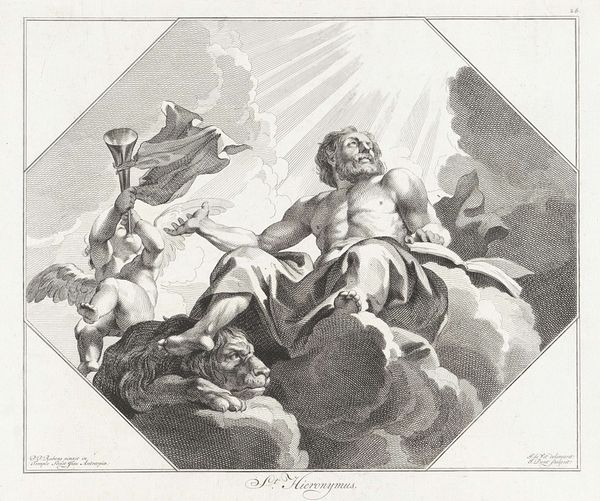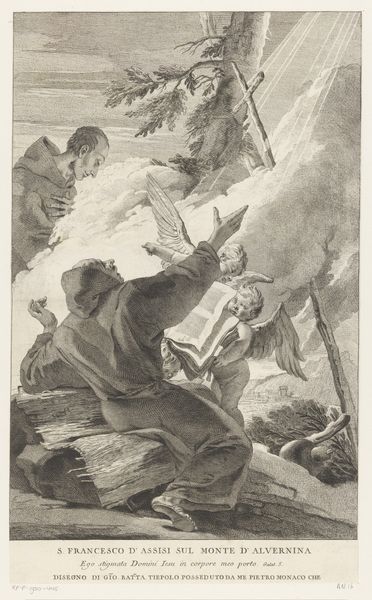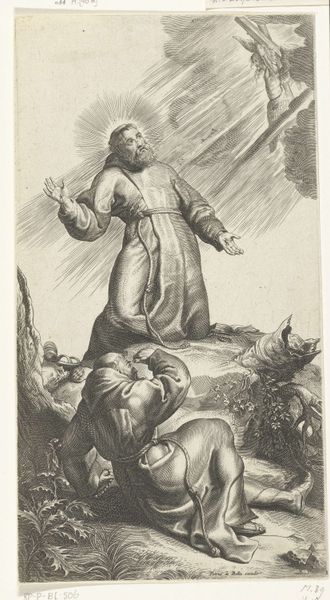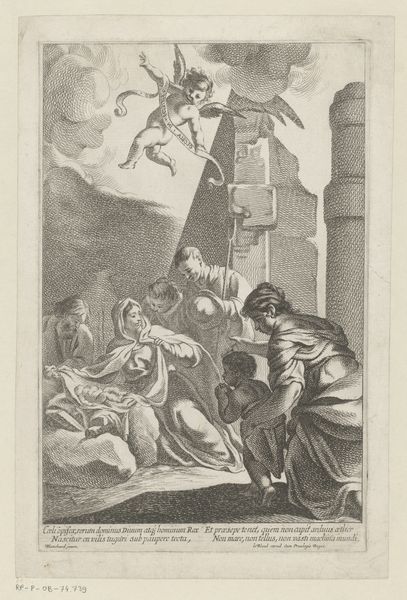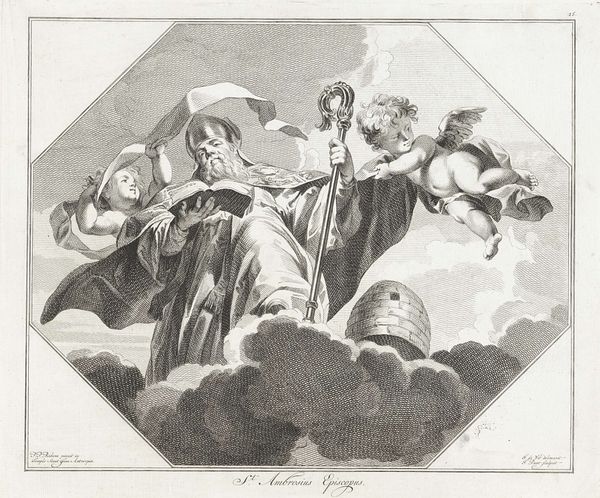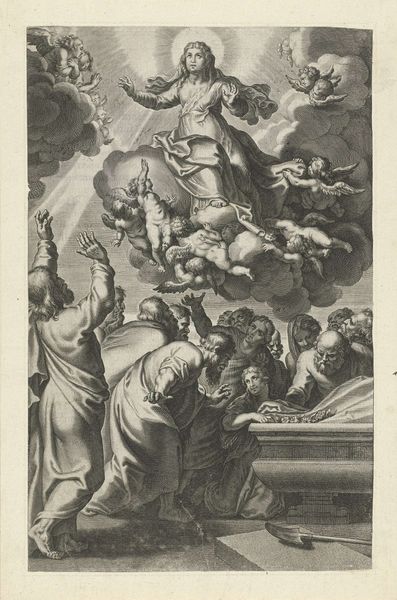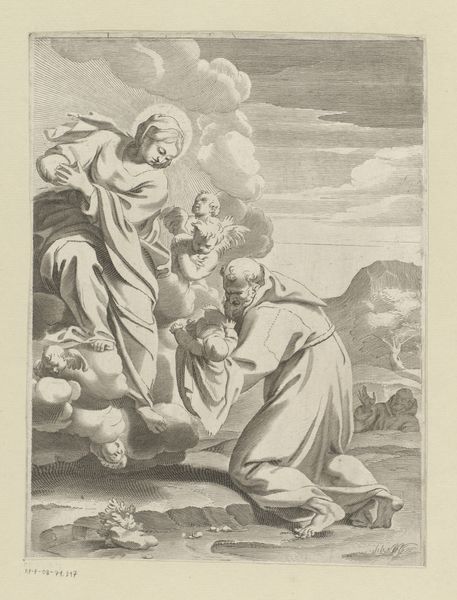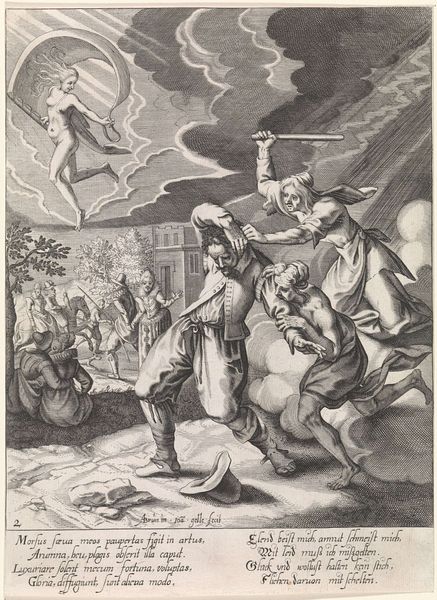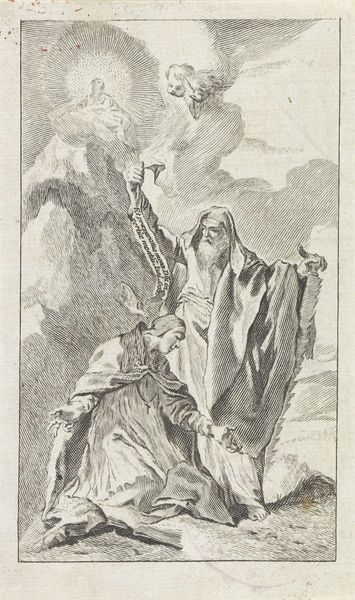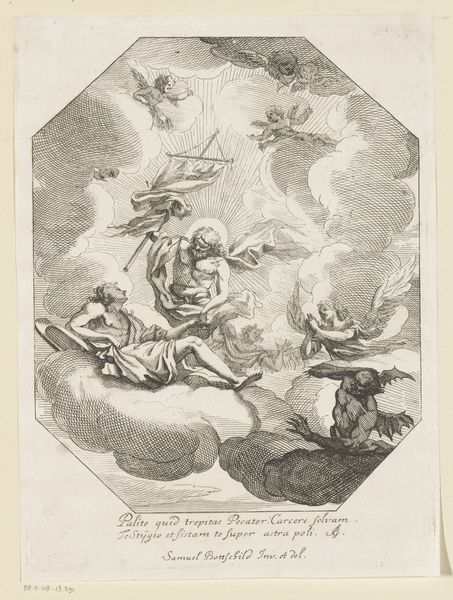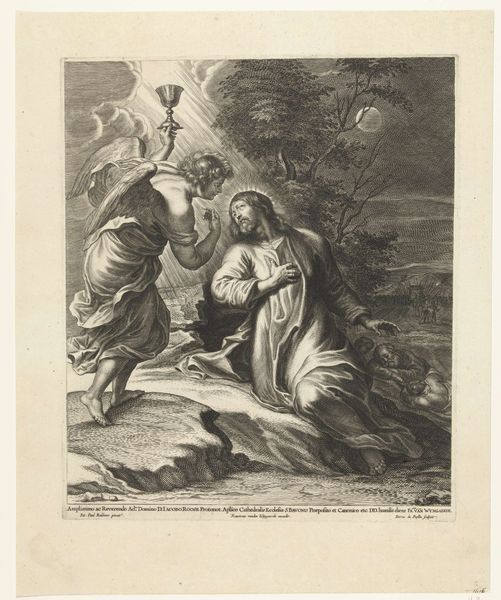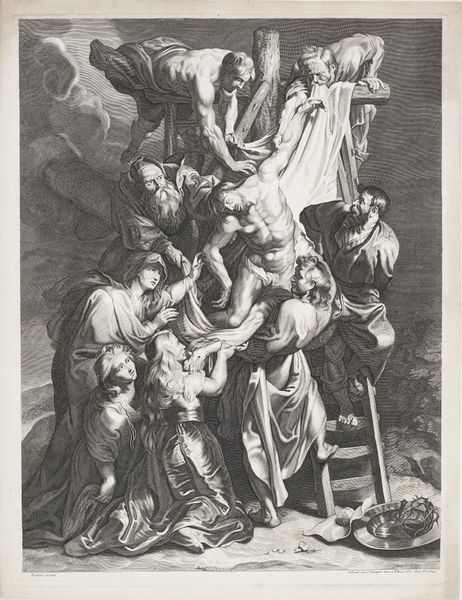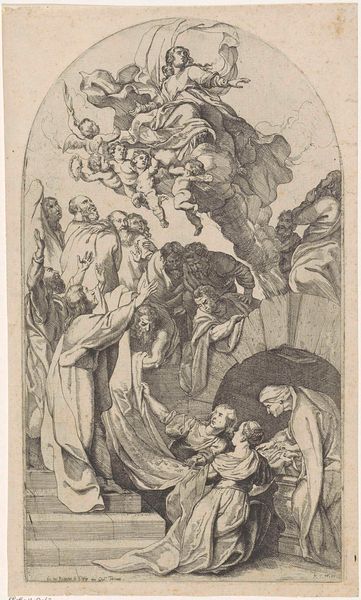
print, engraving
portrait
baroque
old engraving style
traditional media
caricature
history-painting
engraving
Dimensions: height 337 mm, width 401 mm
Copyright: Rijks Museum: Open Domain
Curator: Let's take a closer look at Jan Punt's "Bisschop Athanasius," or "Bishop Athanasius," an engraving dating back to 1753 and held here at the Rijksmuseum. What are your initial impressions? Editor: There's a dynamic energy here. The composition is so heavily diagonal, framed by a square that is itself askew to the picture’s borders, it immediately creates a sense of drama. The sharp contrasts between the blacks and whites amplify that feeling of conflict. Curator: Indeed. This print is laden with socio-political symbolism. Athanasius, the Bishop, is depicted triumphantly above a defeated figure—an allegorical representation of the suppression of Arianism. Punt cleverly uses visual cues to tell this theological story, aligning himself with the dominant religious narrative of the time. Editor: And the textures! Notice the fineness of the lines suggesting cloud and cloth, offset against that simple block-like book in the angel's hand. How that sharpness isolates the subject's hat. Curator: It’s also fascinating to see how Punt navigates the power dynamics of his era. Creating an image that subtly reinforces established authority, and understanding how it circulated. Printmaking played a vital role in shaping public opinion and bolstering institutional legitimacy in 18th-century Netherlands. Editor: The placement of Athanasius relative to the frame edges conveys real force. He occupies space imposingly with the lines directing the viewer’s sight from bottom left, through Athanasius up toward that angel. I also think, stylistically, Punt is very effective with what feels to me like some very confident contouring in some areas and softer line variation elsewhere to convey volume and weight. Curator: What's interesting too is the implicit understanding that the art serves a didactic purpose, one which subtly champions orthodoxy. That is very reflective of artistic patronage at this time. The market wanted art with morals and history woven in. Editor: Thinking about it, these design features guide my own interpretation. If the image had no symbolic or narrative depth I could appreciate its construction. Curator: Ultimately, this work offers insights into the complex intersection of art, religion, and political power during the 18th century. Editor: Absolutely. Looking closer reveals how effectively composition choices amplify narrative purpose and contribute to emotional effect.
Comments
No comments
Be the first to comment and join the conversation on the ultimate creative platform.
